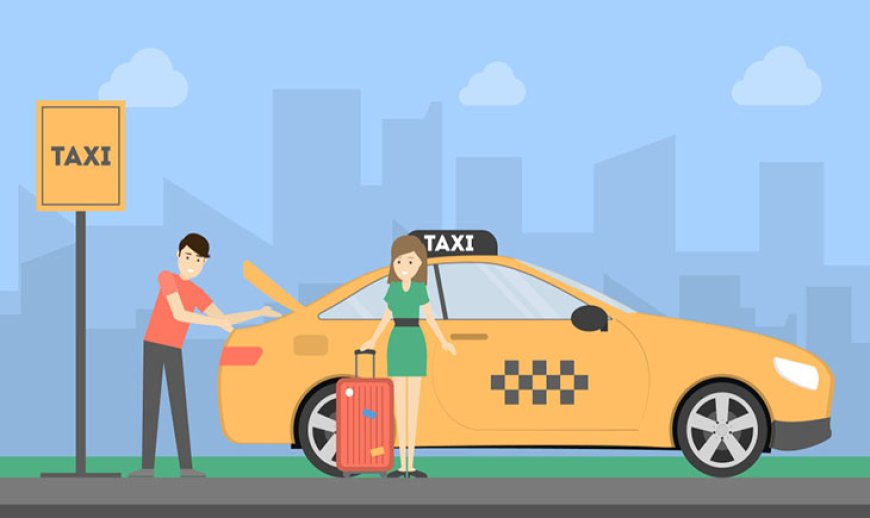How AI Is Optimizing Your Taxi Rides

Introduction
In recent years, artificial intelligence (AI) has profoundly transformed various industries, and the taxi service sector is no exception. Gone are the days when hailing a taxi meant standing on a curb and waiting for a cab to pass by. Today, AI-powered applications have transformed the way we book, ride, and pay for taxi app development services, making the entire process more efficient, cost-effective, and user-friendly. This blog investigates how AI is improving your taxi rides, delving into various aspects from ride-hailing algorithms to proactive maintenance.
Ride-Hailing Algorithms
One of the most visible ways AI is optimizing taxi rides is through ride-hailing algorithms. Companies like Uber, Lyft, and Didi use complex AI algorithms to match passengers with drivers in the most efficient manner possible. These algorithms take into account a multitude of factors including the passenger’s location, the driver’s location, traffic conditions, and even the weather.
Dynamic Pricing
Dynamic pricing, also known as surge pricing, is an AI-driven feature that adjusts the cost of a ride based on real-time demand and supply. When demand for rides increases, prices go up, incentivizing more drivers to get on the road and balance the supply-demand equation. AI algorithms continuously analyze data to determine the optimal pricing, ensuring that passengers can get a ride when they need it and drivers are fairly compensated for their time and effort.
Route Optimization
AI is also crucial in optimizing the routes that taxi drivers take. By leveraging real-time traffic data, historical traffic patterns, and advanced predictive analytics, AI systems can suggest the most efficient routes, minimizing travel time and fuel consumption.
Real-Time Traffic Updates
Modern AI systems integrate with GPS and mapping services to provide real-time traffic updates. This allows taxi drivers to avoid congested areas, road closures, and accidents, ensuring a smoother and faster journey for passengers. AI-powered navigation tools like Google Maps and Waze are prime examples of how real-time traffic data can enhance route optimization.
Predictive Traffic Patterns
AI systems don’t just rely on real-time data; they also predict future traffic patterns based on historical data. By analyzing past traffic trends, AI can forecast which routes are likely to be congested at certain times of the day and suggest alternative routes. This predictive capability is especially useful for planning airport pickups and drop-offs, where timing is crucial.
Driver Behavior and Safety
AI is playing a pivotal role in monitoring and improving driver behavior, which directly impacts passenger safety and ride quality. Advanced AI systems can analyze various aspects of a driver’s performance, providing feedback and recommendations to enhance safety.
Driver Monitoring Systems
Driver monitoring systems use AI to track and analyze driver behavior in real-time. These systems can detect signs of fatigue, distraction, and aggressive driving. For instance, AI algorithms can analyze the driver’s facial expressions and eye movements to detect drowsiness and trigger an alert to take a break. Similarly, sudden braking, rapid acceleration, and sharp turns are monitored to ensure safe driving practices.
Predictive Maintenance
AI-driven predictive maintenance systems help keep taxis in optimal condition by predicting when parts are likely to fail or need maintenance. By analyzing data from various sensors and historical maintenance records, AI can forecast potential issues before they become critical. This not only enhances passenger safety but also reduces downtime and maintenance costs for taxi operators.
Enhancing Passenger Experience
AI is also transforming the passenger experience, making taxi rides more convenient and enjoyable. From personalized ride recommendations to seamless payment systems, AI is at the forefront of enhancing customer satisfaction.
Personalized Ride Recommendations
AI algorithms analyze a passenger’s past behavior and preferences to provide personalized ride recommendations. For instance, if a passenger frequently travels to a particular location at a specific time, the AI system can suggest booking a ride in advance. Similarly, AI can recommend ride-sharing options to passengers traveling in the same direction, reducing costs and environmental impact.
Seamless Payment Systems
AI has streamlined the payment process, making it faster and more secure. Features like automated fare calculation, digital wallets, and contactless payments have made it easier for passengers to pay for their rides. AI systems also detect and prevent fraudulent transactions, ensuring a safe and reliable payment experience.
Environmental Impact
AI is contributing to the reduction of the environmental impact of taxi services. By optimizing routes, encouraging ride-sharing, and promoting the use of electric vehicles (EVs), AI is helping to create a more sustainable transportation ecosystem.
Ride-Sharing
Ride-sharing, facilitated by AI algorithms, is an effective way to reduce the number of vehicles on the road, lowering traffic congestion and emissions. AI matches passengers traveling in the same direction, optimizing the use of available vehicles and reducing the overall carbon footprint.
Electric Vehicles and Fleet Management
AI is aiding the transition to electric vehicles (EVs) in the taxi industry. AI-powered fleet management systems monitor the performance of EVs, optimizing charging schedules and routes to ensure maximum efficiency. By predicting when and where EVs should be charged, AI helps to minimize downtime and extend the lifespan of batteries.
Challenges and Future Prospects
While AI has significantly optimized taxi rides, it also presents certain challenges. Privacy concerns, data security, and the ethical implications of AI-driven decision-making are critical issues that need to be addressed. Nevertheless, the future of AI in the taxi industry looks promising, with advancements in autonomous vehicles, improved predictive analytics, and enhanced passenger experiences on the horizon.
Privacy and Data Security
The use of AI in taxi services involves the collection and analysis of vast amounts of data, raising concerns about privacy and data security. Ensuring that passenger data is protected and used responsibly is paramount. Taxi companies must implement robust data protection measures and comply with regulations to maintain passenger trust.
Autonomous Vehicles
The advent of autonomous vehicles (AVs) is poised to revolutionize the taxi industry further. AI-driven AVs have the potential to eliminate the need for human drivers, reducing labor costs and enhancing safety. However, the widespread adoption of AVs faces technical, regulatory, and ethical challenges that need to be addressed before they become mainstream.
Conclusion
Artificial intelligence has undeniably optimized taxi rides in a variety of ways, from improving ride-hailing algorithms and route optimization to enhancing passenger experience and promoting sustainability. As AI technology advances, we can expect even more inventive solutions that will further transform the taxi industry, making it more efficient, safe, and environmentally friendly. The journey has only just begun, and the future of AI in optimizing taxi rides looks incredibly promising.
What's Your Reaction?
























